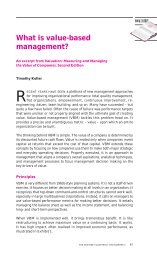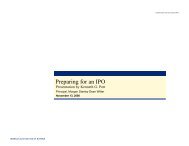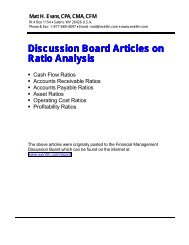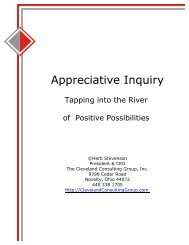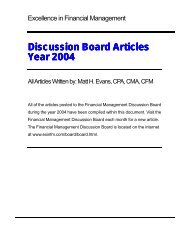Chapter I: Introduction to Data Mining
Chapter I: Introduction to Data Mining
Chapter I: Introduction to Data Mining
You also want an ePaper? Increase the reach of your titles
YUMPU automatically turns print PDFs into web optimized ePapers that Google loves.
© Osmar R. Zaïane, 1999 CMPUT690 Principles of Knowledge Discovery in <strong>Data</strong>bases<br />
<strong>to</strong> be non-interesting, one has <strong>to</strong> put a measurement on the patterns. However, this raises<br />
the problem of completeness. The user would want <strong>to</strong> discover all rules or patterns, but<br />
only those that are interesting. The measurement of how interesting a discovery is, often<br />
called interestingness, can be based on quantifiable objective elements such as validity of<br />
the patterns when tested on new data with some degree of certainty, or on some<br />
subjective depictions such as understandability of the patterns, novelty of the patterns, or<br />
usefulness.<br />
Discovered patterns can also be found interesting if they confirm or validate a hypothesis<br />
sought <strong>to</strong> be confirmed or unexpectedly contradict a common belief. This brings the issue<br />
of describing what is interesting <strong>to</strong> discover, such as meta-rule guided discovery that<br />
describes forms of rules before the discovery process, and interestingness refinement<br />
languages that interactively query the results for interesting patterns after the discovery<br />
phase. Typically, measurements for interestingness are based on thresholds set by the<br />
user. These thresholds define the completeness of the patterns discovered.<br />
Identifying and measuring the interestingness of patterns and rules discovered, or <strong>to</strong> be<br />
discovered, is essential for the evaluation of the mined knowledge and the KDD process<br />
as a whole. While some concrete measurements exist, assessing the interestingness of<br />
discovered knowledge is still an important research issue.<br />
How do we categorize data mining systems?<br />
There are many data mining systems available or being developed. Some are specialized<br />
systems dedicated <strong>to</strong> a given data source or are confined <strong>to</strong> limited data mining<br />
functionalities, other are more versatile and comprehensive. <strong>Data</strong> mining systems can be<br />
categorized according <strong>to</strong> various criteria among other classification are the following:<br />
• Classification according <strong>to</strong> the type of data source mined: this classification<br />
categorizes data mining systems according <strong>to</strong> the type of data handled such as<br />
spatial data, multimedia data, time-series data, text data, World Wide Web, etc.<br />
• Classification according <strong>to</strong> the data model drawn on: this classification<br />
categorizes data mining systems based on the data model involved such as<br />
relational database, object-oriented database, data warehouse, transactional, etc.<br />
• Classification according <strong>to</strong> the king of knowledge discovered: this<br />
classification categorizes data mining systems based on the kind of knowledge<br />
discovered or data mining functionalities, such as characterization, discrimination,<br />
association, classification, clustering, etc. Some systems tend <strong>to</strong> be<br />
comprehensive systems offering several data mining functionalities <strong>to</strong>gether.<br />
• Classification according <strong>to</strong> mining techniques used: <strong>Data</strong> mining systems<br />
employ and provide different techniques. This classification categorizes data<br />
mining systems according <strong>to</strong> the data analysis approach used such as machine<br />
learning, neural networks, genetic algorithms, statistics, visualization, databaseoriented<br />
or data warehouse-oriented, etc. The classification can also take in<strong>to</strong><br />
account the degree of user interaction involved in the data mining process such as<br />
query-driven systems, interactive explora<strong>to</strong>ry systems, or au<strong>to</strong>nomous systems. A<br />
University of Alberta page 12 Department of Computing Science



